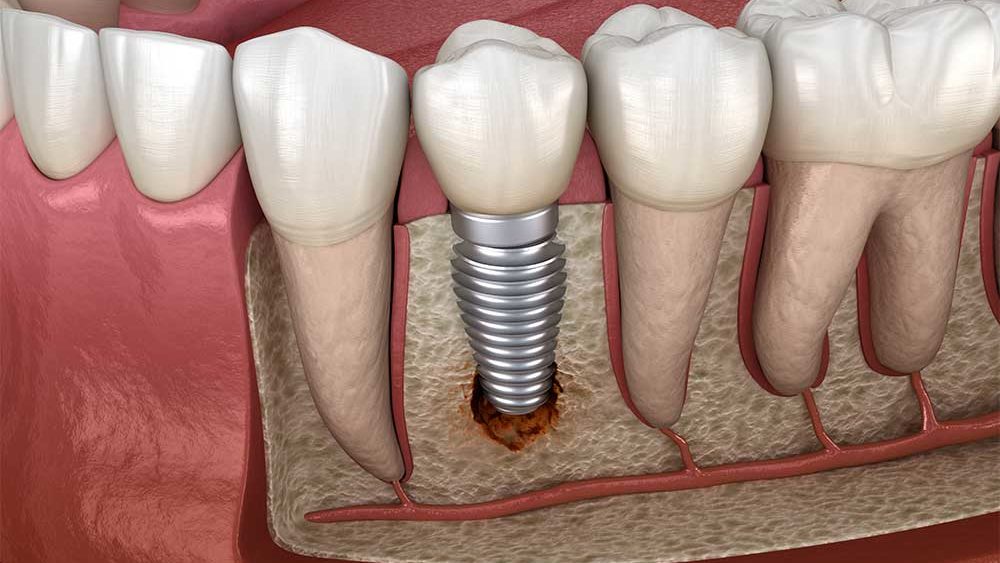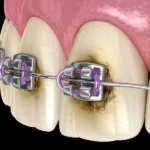What Does a Periodontist Do?

Table of Contents
What Does a Periodontist Do? | Periodontics Procedures
In the most basic terms, a periodontist is a dentist who is considered a specialist or expert in the prevention, treatment, and diagnosis of various types of periodontal disease. A periodontist also typically specializes in the placement of dental implants to secure restorative teeth or a permanent bridge. In other instances, a periodontist will also perform limited oral plastic surgery, gum surgery, or cosmetic surgical procedures limited to gum as required. Those who have experienced or believe they are experiencing periodontal disease should plan to see a periodontist as soon as possible. Any comprehensive oral health care program should include regular visits to a general dentistry care provider as well as a periodontist. Routine examinations and checks help to ensure that problems and issues are detected early.
This is especially important because periodontal disease can at times only be detected through a comprehensive evaluation. As an added note, those with respiratory disease, heart problems, diabetes, osteoporosis or malnutrition as well as those who smoke should be particularly vigilant when it comes to periodontal disease. Nothing quite compares to having routine examinations and checkups in this regard.
When deciding upon which periodontist will be best for your particular needs it is important to note that he or she is required to have a certain level of education and certification. For example, as a specialist in periodontal care, an individual must complete a four-year undergraduate degree and then successfully graduate from an accredited dental school. An individual is then awarded the prestigious Doctor of Dental Surgery or Doctor of Medical Dentistry degree. Further, those wishing to become a periodontist must complete three to as much as seven years of additional formal training in a periodontology residency program. The school must be an American Dental Association accredited institution.
A periodontist may also choose to earn national board certification. This is accomplished through the American Board of Periodontology. The process requires completing and passing several comprehensive oral and written examinations that cover all aspects of periodontal disease and treatment. Also impressive is the fact that a periodontist must become recertified at regular intervals every six years. Recertification involves demonstrating competency in periodontal procedures, current knowledge, and involvement in professional activities as well as continuing education. Many periodontists who are board-certified choose to become involved in some enriching extracurricular activities. This includes everything from working in hospitals and dental schools to becoming involved with international agencies and doing periodontal research. Ongoing education is a major part of being a periodontist as well as a general dental care provider.
Useful Tips For Choosing A Periodontist
Of course, the easiest way to find this type of dental care specialist is to simply request a referral from your general dentistry care provider. That said several considerations must be taken into account when selecting a periodontist who can suit your needs the best.
For example, a prospective patient may choose to consider how long the periodontist has been in practice. It is also good to determine how involved your periodontist is in recertification courses, continuing education, and even research involvement. Further, it may be well worth understanding your periodontist’s range of treatment philosophies. Some periodontists focus more on nonsurgical alternatives while others may choose to treat periodontal disease more aggressively through the use of surgery. At the end of the day, the patient should always feel comfortable with whatever option is chosen.
Also worth considering is the level of training and clinical experience that a periodontist has about specific or recommended procedures. The patient should also consider the type of dental equipment and dental technology that the periodontist typically uses. For example, some periodontists may take advantage of only the latest technology and advances in periodontal science. Discuss this with your periodontist before making a final decision.
More general things to consider include the type of medication and pain relief options that are offered by the periodontist. About any proposed treatments, what are the estimated costs ? When it comes to insurance, does your periodontist accept the insurance that you currently have? Is in-house financing available? These are all simple questions that should be asked before beginning any treatment.
What does a periodontist do for gum disease?
When determining which periodontist will be best for your needs, it is also good to consider the level of emergency care offered. Also, while some periodontists practice individually, others may be part of the multispecialty dental care facility. Convenience may be a consideration in this regard. Note that each case is different and unique and that is why it is good to choose carefully when selecting a periodontist. Those who require highly specialized and specific procedures may find that an individual periodontist is a better choice. Striking a balance between convenience and the best possible care is always a good idea.
Medical History and Dental History
Finally, patients should note that their first periodontal visit should be expected to involve an initial evaluation. This includes going over all prior dental and medical history of the patient. Your periodontist should be advised of any prior medical or dental problems that you have experienced. You should also discuss any medications that you are currently taking including even oral contraception. Certain medications can harm the gums and may have contradictions in terms of antibiotic use. As a warning, smoking cigarettes can greatly increase the risk of periodontal disease.
While each patient is unique and different, these are just a few ways of making the best possible choice when selecting a periodontist. Staying proactive about your dental health and overall wellness is always a smart strategy. Periodontal care offered by an experienced periodontist can greatly improve dental health and overall wellbeing. Choose the right periodontist and enjoy years of excellent dental health and wellness.
Why Would You Need to See a Periodontist?
Periodontal disease, or in some cases known as “gum disease,” is easily preventable, despite being very common among adults and children. The condition can range from minor to severe and is mostly determined by the quality and consistency of your at-home oral care. In a healthy mouth, each tooth is attached to the gum and bone by attachment fibers found in the gum tissue. Normally, there is a space with a depth of one to three millimeters between the tooth and the attachment fibers; however, infection of the gum caused by bacteria in the mouth can lead to a buildup of plaque and tartar that widens the space between the tooth and fibers. This expansion of space between the tooth and gum tissue is what is known as a periodontal pocket, which acts as a housing for more bacteria and plaque as it continues to expand. If left untreated, the buildup can cause the gum to become inflamed and or infected which can lead to an increase in the severity of the conditions or special cases of tooth loss.
What are the signs of periodontal pockets?
Many warning signs occur in the developing stages of the condition. Knowing what these signs are increases the chances of detecting the condition in the early stages, allowing for immediate treatment. Additionally, several factors can increase your susceptibility to infection of the gum tissue. Included factors are smoking, diabetes, certain medications, and hormonal changes primarily in women. When a periodontal pocket is present, the gum tissue around the respective tooth or teeth becomes swollen, red, and inflamed. Along with this, other significant signs include bad breath, bleeding gums, pain when chewing, tooth sensitivity, and gum tissue that is pulling away from the tooth.
When the buildup reaches past the moderate stages, the bacteria growing within the pocket begins to cause the bone to deteriorate, eliminating the fibers that keep the tooth attached to the gum and in place. Although after proper treatment the gum tissue will slowly tighten back around the tooth, the deteriorated bone is not reversible. Without these attachment fibers, patients are more prone to tooth loss and may have to undergo other surgical procedures such as imputing dental implants to replace the lost teeth. When checking for pockets, your dentist will measure the depth of the space around each tooth with a probe. A measurement of one to three millimeters indicates healthy teeth and gum. However, measurements over three millimeters are indicative of moderate to severe buildup and bone decay depending on the depth.
What treatments are available for periodontal pockets?
In cases where the bacterial buildup has reached a depth well over four millimeters, professional cleaning is not enough to rid the gum pocket of the bacteria, plaque and tartar buildup. In this case, an additional periodontal pocket reduction procedure may be required. In this procedure, your dentist will fold back the gum tissue and remove the existing build-up before securing the tissue back in place. Removing the buildup is critical because it allows the gum tissue to begin the healing and restoration process, as it tightens itself back to the healthy position around the tooth. Following the procedure, proper cleaning care is a must to prevent more buildup. In some cases, your dentist may want to increase the frequency of your cleanings to monitor the healing process of the gum tissue, as well as to help in the prevention of another pocket-forming.
How to prevent periodontal pockets?
Basic daily hygiene care is the most effective way to prevent against bacteria and plaque buildup between the gum tissue and the tooth. Setting a routine for brushing and flossing twice a day can help to eliminate some bacteria that accumulate around the gum line and results in infection and or inflammation. It is also important to make sure that you are brushing your teeth effectively and flossing to reach the places your toothbrush may not be able to reach. In many cases, a soft-bristle toothbrush may work best and should be replaced with a new brush every three to four months. Along with your at-home care routine, regular dental check-ups are an important part of the prevention process. In some cases, your dentist may be able to detect the initial occurrences of periodontal pockets and treat the affected area before it worsens. Along with this, should you notice the symptoms of pocket formations, it is important to let your dentist know immediately to begin the treatment and healing or prevention process. Eliminating the causes of the condition before the worsening is the best way to help prevent periodontal pockets and ensure a lifetime of healthy, happy smiles.
If you have any questions or concerns about your oral health, please don’t hesitate to contact ou to make an appointment with one of our gum specialists.
About Our Periodontist:
Dr. Kathleen Akers
Dr. Akers is board certified Periodontist with a Masters of Science in Dentistry. Dr. Akers has served Texas as a licensed dentist since 2006, with permits for enteral, parenteral, and nitrous oxide anesthesia. Alongside her passion for frontline dental work, she has also cultivated a keen interest in research and in bringing the next level of dental treatments. As a member of the American Dental Association, Greater Houston Society of Periodontists, the Southwest Society of Periodontists, and a Diplomate of the American Academy of Periodontology, Dr. Akers strives to help build a shared, ever-expanding knowledge base through a close-knit sense of professional community.
-
February 01, 2023What You Need to Know About Dental Hygienists?
-
September 16, 2021What Is Geographic Tongue?
-
January 18, 2021What Is Halitosis?
-
September 17, 2020What Does a Periodontist Do?
-
April 17, 2020What Can Cause Cold Sore?
-
April 05, 2020Gum Surgery Cost In Houston
-
April 05, 2020Gum Disease in Houston
-
February 07, 2020What is Alveoloplasty?





